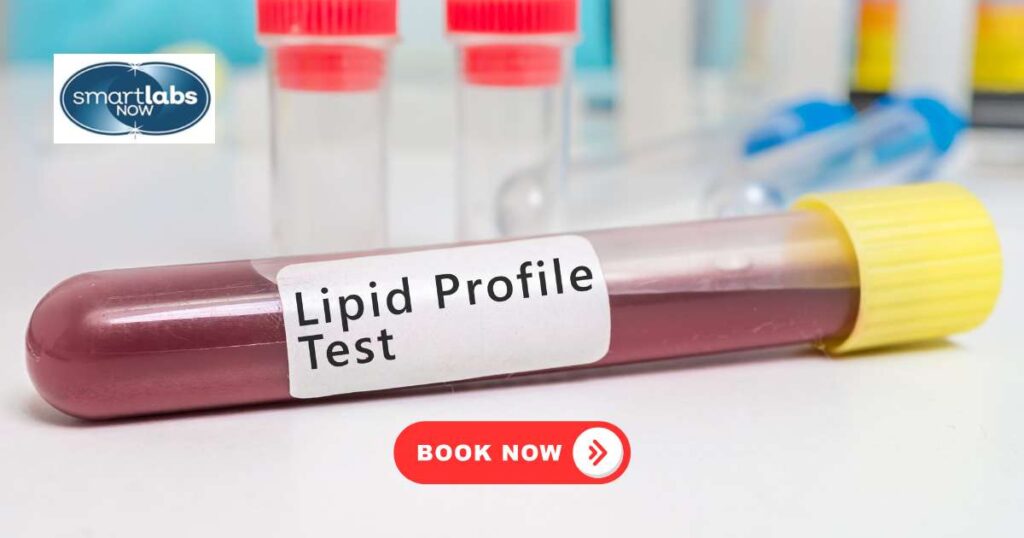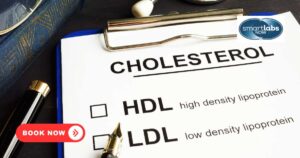
A lipid panel test measures the amount of cholesterol and triglyceride in a blood sample, delivering a detailed lipid profile that reveals your cholesterol level and other fat markers.
These test results show total cholesterol, LDL (“bad”) cholesterol, HDL (“good”) cholesterol, and triglyceride values, helping your healthcare provider determine your risk for heart disease by analyzing cholesterol and triglyceride levels in your blood vessels.
To complement your lipid readings with insights into liver function and metabolic health, a Comprehensive Blood Chemistry Panel can provide a complete picture of your overall health.
When it comes to understanding your cholesterol and triglyceride levels, you need results you can trust and fast. At Smart Labs Now in Portland, Oregon, our CLIA‑certified laboratories and expert phlebotomists deliver precise lipid panel testing in a welcoming, private setting.
Understanding how this blood test measures the amount of cholesterol and fats in your blood is vital for early detection of cardiovascular disease and personalized prevention strategies.
Choose the lab that Portland trusts for accuracy, speed, and care!
Schedule Now to Book Your Lipid Panel Test Today

A lipid panel (also called a lipid profile) is a standard cholesterol blood test that measures total cholesterol, LDL cholesterol, HDL cholesterol, and triglyceride levels.
This test is used to determine if your cholesterol is within a healthy range and to calculate your risk factors for cardiovascular disease.
By assessing the type of fat and quantity of cholesterol in your blood, the lipid panel helps detect abnormal lipid patterns before heart attack or stroke occur.
The 2005 study published by Baigent et al. states that in a prospective meta‑analysis of 90,056 participants across 14 randomized statin trials, each 1 mmol/L reduction in LDL cholesterol yielded a 20 % relative reduction in major vascular events, firmly establishing LDL lowering as a cornerstone of cardiovascular prevention.

A certified phlebotomist collects a blood sample via venipuncture, ensuring enough blood is collected for all assays.
The blood is processed in a CLIA‑certified lab, where enzymatic assays measure total cholesterol and triglyceride, and calculations (e.g., Friedewald equation) or direct assays determine LDL and HDL cholesterol.
Versions of the test may report VLDL cholesterol or non‑HDL cholesterol for a deeper cardiovascular health by analyzing cholesterol.
Triglycerides are a type of fat that store unused calories and provide energy.
Optimal triglyceride levels are below 150 mg/dL; high levels of triglycerides (>200 mg/dL) can increase your risk factor for cardiovascular disease.
High triglyceride often occurs with diabetes, high blood pressure or diabetes, or metabolic syndrome, signaling a need for lifestyle changes or medication.
The 2014 study published by the Emerging Risk Factors Collaboration states that both fasting and non‑fasting triglyceride concentrations between 2–10 mmol/L are associated with incrementally higher risks of cardiovascular disease, and levels above 10 mmol/L confer additional risk particularly acute pancreatitis highlighting the importance of accurate triglyceride measurement.

LDL cholesterol (low‑density lipoprotein), known as “bad cholesterol,” carries cholesterol particles through the blood and can build up in the walls of arteries, leading to heart attack or stroke.
HDL cholesterol (high‑density lipoprotein), sometimes called “good cholesterol,” helps transport cholesterol in your blood back to the liver for removal, reducing plaque buildup and lowering risk of heart disease.
Fast before the test for 9–12 hours, consuming only water to ensure accurate triglyceride level readings.
Avoid alcohol and strenuous exercise 24 hours prior, as they can alter blood cholesterol and triglyceride measurements.
Non‑fasting lipid panels are possible for routine screening according to the American Heart Association, but follow your healthcare provider’s guidance.
Your lipid panel test results show:
The sum of LDL cholesterol, HDL cholesterol, and 20% of triglyceride level, with levels of total cholesterol below 200 mg/dL considered desirable.
Optimal <100 mg/dL; <70 mg/dL if you have existing heart disease.
≥40 mg/dL for men, ≥50 mg/dL for women to protect against heart attack or stroke.
<150 mg/dL to minimize risk of cardiovascular disease.
Abnormal results may indicate hyperlipidemia or genetic lipid disorders, necessitating follow‑up testing or specialist care.

By quantifying cholesterol in your blood, a standard lipid panel calculates your atherosclerotic cardiovascular disease risk score.
High LDL or triglyceride levels and low HDL cholesterol increase your risk for plaque build up in the blood, leading to narrowed arteries and higher risk of heart disease.
Regular lipid test monitoring shows whether lifestyle or medications are successfully lowering cholesterol and reducing your risk for heart disease.
Adopt a heart‑healthy diet low in saturated and trans fats, rich in fruits, vegetables, and whole grains to lower cholesterol.
Re‑test in 2–3 months to assess improvement; consult a cardiologist if LDL remains >190 mg/dL or you have established cardiovascular disease.

Early detection of abnormal lipid levels is key to reducing your risk for heart disease.
Our lipid panel test measures total cholesterol, LDL cholesterol, HDL cholesterol, and triglyceride levels in milligrams per deciliter of blood, providing a comprehensive lipid profile.
Results are available online within 24 hours, so you can access your test results quickly and discreetly.
Schedule your lipid panel test with Smart Labs Now today and take control of your heart health with confidence.
Visit us at 12003 NE Ainsworth Circle #103, Portland, OR 97220 or call (503) 477‑7748 to book your appointment.
You can also schedule online at smartlabsnow.com for fast and private booking
Stay heart‑healthy. Stay informed. Get tested today!
Please consult your primary care physician before making any changes to your treatment plan based on your lipid panel test results. Smart Labs Now is not responsible for health outcomes resulting from information in this post. This content is for educational purposes and is not a substitute for professional medical advice. Always discuss any concerns or questions about lipid testing with your healthcare provider.